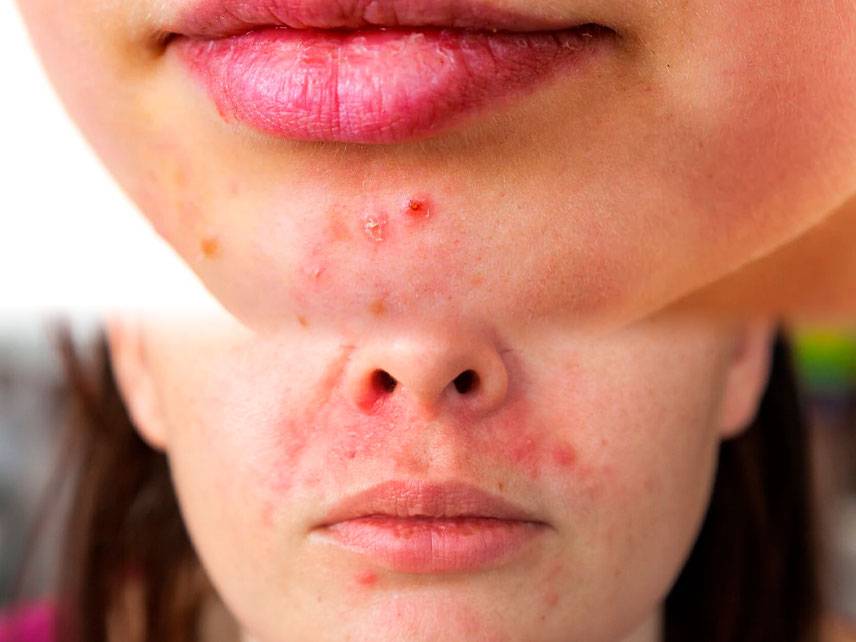Perioral dermatitis is a common, non-contagious skin condition characterized by a rash around the mouth. It is thought to be an immune reaction to bacteria on the skin, but the exact cause is unknown. The condition is most commonly seen in women between the ages of 20 and 45. It is characterized by a red rash, sometimes with tiny blisters, and can be itchy or scaly. It can also cause burning or stinging sensations.
Signs and Symptoms
The most common signs and symptoms of perioral dermatitis include:
-
Red rash around the mouth, nose, chin, and eyes
-
Tiny blisters or bumps
-
Itchy, scaly, or dry skin
-
Burning or stinging sensations
-
Redness and inflammation
Causes
The exact cause of perioral dermatitis is unknown, but it is thought to be an immune reaction to bacteria on the skin.
Other factors that may contribute to the condition include:
-
Overuse of topical steroids
-
Skin irritation from cosmetics, soaps, and other skin care products
-
Hormonal changes
-
Stress
-
Exposure to ultraviolet (UV) light
-
Allergies
Risk Factors
Certain factors can increase the risk of developing perioral dermatitis, including:
-
Use of topical steroids
-
Use of certain skin care products, such as moisturizers, cleansers, and makeup
-
Having dry skin
-
Exposure to ultraviolet (UV) light
-
Having a weakened immune system
-
Stress
Prevention
There is no way to completely prevent perioral dermatitis, but there are steps you can take to reduce your risk.
You can take steps to reduce your risk perioral dermatitis:
-
Avoiding the use of topical steroids
-
Avoiding the use of skin care products that may irritate your skin
-
Keeping your skin moisturized
-
Avoiding exposure to UV light
-
Eating a balanced diet and managing stress levels
Diagnosis
Your doctor can diagnose perioral dermatitis by looking at your skin and asking about your symptoms and any products you may have used. They may also take a skin sample for further testing.
Treatment
The main goal of treatment for perioral dermatitis is to reduce inflammation and irritation.
Treatment options perioral dermatitis include:
-
Topical antibiotics
-
Topical antifungal medications
-
Oral antibiotics
-
Oral antifungal medications
-
Oral isotretinoin
-
Ultraviolet (UV) light therapy
Coping and Support
Living with perioral dermatitis can be frustrating and uncomfortable. It is important to remember that the condition is treatable and can be managed with the right treatment.
Some tips for coping with the condition include:
-
Avoiding skin care products that may irritate your skin
-
Keeping your skin moisturized
-
Eating a balanced diet and managing stress levels
-
Talking to your doctor about any changes to your skin
Complications
In some cases, perioral dermatitis can cause complications, such as:
-
Scarring
-
Skin discoloration
-
Infection
-
Spread of the rash to other areas of the body
-
Recurrence of the condition
Living with Perioral Dermatitis
Living with perioral dermatitis can be frustrating, but it is important to remember that the condition is treatable and can be managed with the right treatment. It is also important to avoid skin care products that may irritate your skin, keep your skin moisturized, and manage stress levels. If you have any concerns about your condition, be sure to talk to your doctor. With the right treatment, you can manage your symptoms and reduce the risk of complications.





